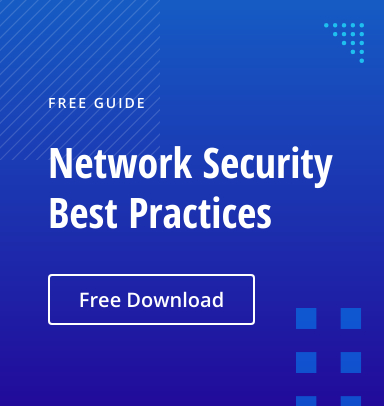Imagine you’re in the position to take over a new job as a network administrator. Finally, you get to be the boss! Sounds good, right? But what if you’re taking over a network that you know little or nothing about, and the person who previously managed the network has already left so you have no opportunity to learn from their experience?
That’s precisely the question posed recently by a user on the Spiceworks community forums: Newbie Network Manager needs help! Spiceworks users have provided many helpful suggestions to this thread for how a new network manager should approach this situation for best results. Boiling it all down, we can come up with the following list of the top 5 most important things for a new network administrator to do get up to speed. Note, of course, that these aren’t steps that can be taken individually; many of these processes will need to be performed concurrently or in tandem—but you can still set realistic goals for completing your “get acquainted” stage.
1. Documentation
By far the most common recommendation from the Spiceworks forum is to review and document everything before jumping into making changes. You’ll want to find and familiarize yourself with any existing documentation left by your predecessor—and verify that this documentation is still accurate and up-to-date. Make sure that recorded passwords still work and update as appropriate.
If you don’t have existing documentation, or the documentation is out of date, you’ll need to create current documentation for everything in your environment. Inventory your hardware—from server rooms to client terminals. How many printers or copiers are on the network, and where are they located? Do you have to worry about the phone system and conference rooms? Are employees issued company-owned mobile devices, and if so, how are they managed and updated? How old is your equipment and how is it running?
Finally, don’t forget about things such as maintenance contracts and software licenses. These items will impact your budgeting so you don’t want to be taken by surprise when something expires or needs updating. Documentation needs to be thorough and updated as changes are made going forward.
2. Assess and Verify Network Security
If you’re coming to a new workplace, it will be important to assess your current network security and make sure it’s appropriate for your organization. Check that your spam and anti-virus definitions are up-to-date. You’ll need to know if there are particular laws or regulations (such as HIPAA) that this industry is required to uphold and verify that your network infrastructure is able to do all that’s necessary. And you need to be on the same page as management with regard to how secure your network is while also being able to serve the needs of users.
At this stage, you’ll want to review who has network access and at what levels. As a precaution, you might want to force a change to all passwords, but certainly to administrator passwords to ensure no previous users have unauthorized access. As one Spiceworks user said, “Once you change passwords, those who need access will come to you and you can then figure out what they are accessing and why.” This might be seen as an extreme step by some, but it will let you verify that people have access only to those systems where they truly need to be.
3. Review or Establish Disaster Recovery and Backup
As part of your documentation review, you’ll probably come across any existing backups and disaster recovery plans. If you don’t find these, you should probably make it a priority to create them. If they are in place, you’ll still want to verify that they’re up-to-date and functional. Test your DR plan to ensure it works and that it can restore your network in an appropriate timeframe if necessary. Plan for any changes you think are necessary.
Backups can be tricky, of course. You need to make sure you’re backing up the right data and important system information and that you can restore that data. You might need to consult with management and other team members to ensure that your backups are targeting the correct systems. Naturally, you’ll need to test existing backups; too often people find they have corrupt data when they need to do a restore—don’t let yourself fall into this trap.
4. Talk to & Listen to the People You Work With
You might be in a situation where you don’t have formal training from your predecessor, but that doesn’t mean there aren’t people around who know a lot about the organization. Get to know them and find out what they know. Are you taking over an existing IT team that you’ll be managing, or are you coming to a small organization where you’ll be the whole IT department? If you’re on your own, think of your end users and management as your team—partner with them to learn about the network and to plan for their needs and requirements as well as the network’s security.
If you’ll be managing a team, you can draw on their knowledge, but don’t let that replace your firsthand experience. Listening is a crucial skill for leaders. As one Spiceworks user put it, “two ears, one mouth, use them in that proportion.” Skilled leaders know how to take advice and input from all sources—and then make the decision that’s best for the environment. Get to know your team. Get to know the other employees you work with. It all helps with understanding the needs and requirements of the network.
5. Don’t Take Work Home
This idea might seem hard to follow, particularly for a new manager. You’re probably under a lot of stress to figure things out, get up to speed, and start running things like a seasoned veteran of the IT trenches. So it might feel natural to work 80 hour weeks, to stay at the office far too late, and to toss and turn in bed at night worrying over how you’re going to solve some network problem.
The reality is that you need time to recharge your mental batteries as you embark on this new role. You need to let your brain rest, to recoup, so that you can address the problems of work fresh the next day. So don’t take work home, and try to leave the worries and cares of the office at the office. Yes, it can be hard, whether the pressure you feel is real (coming from management) or imagined (coming from your own head). But if you start your management career without a careful balance of work and home life, how do you think you’ll ever establish a proper balance?
Taking on any new job can be stressful, and joining the ranks of management adds an extra level of responsibility. Of course, it also adds extra respect and freedom, when done well. These guidelines should help you out if you’re newly promoted and taking the management reins in IT for the first time.



